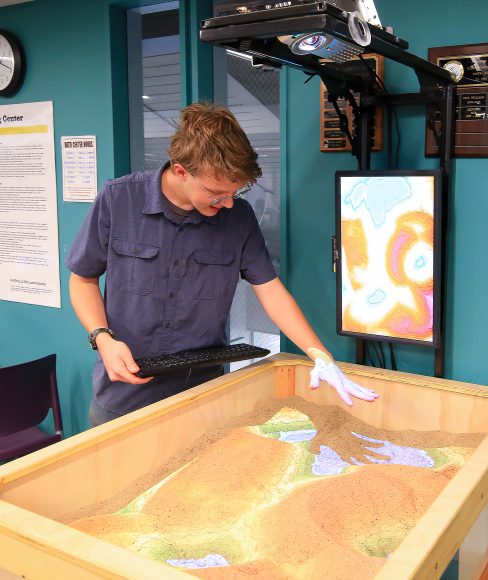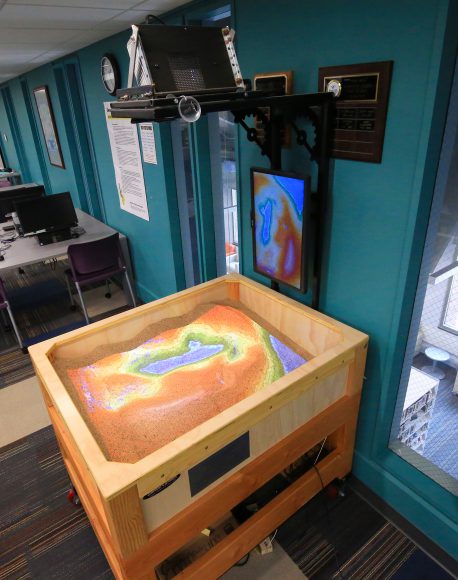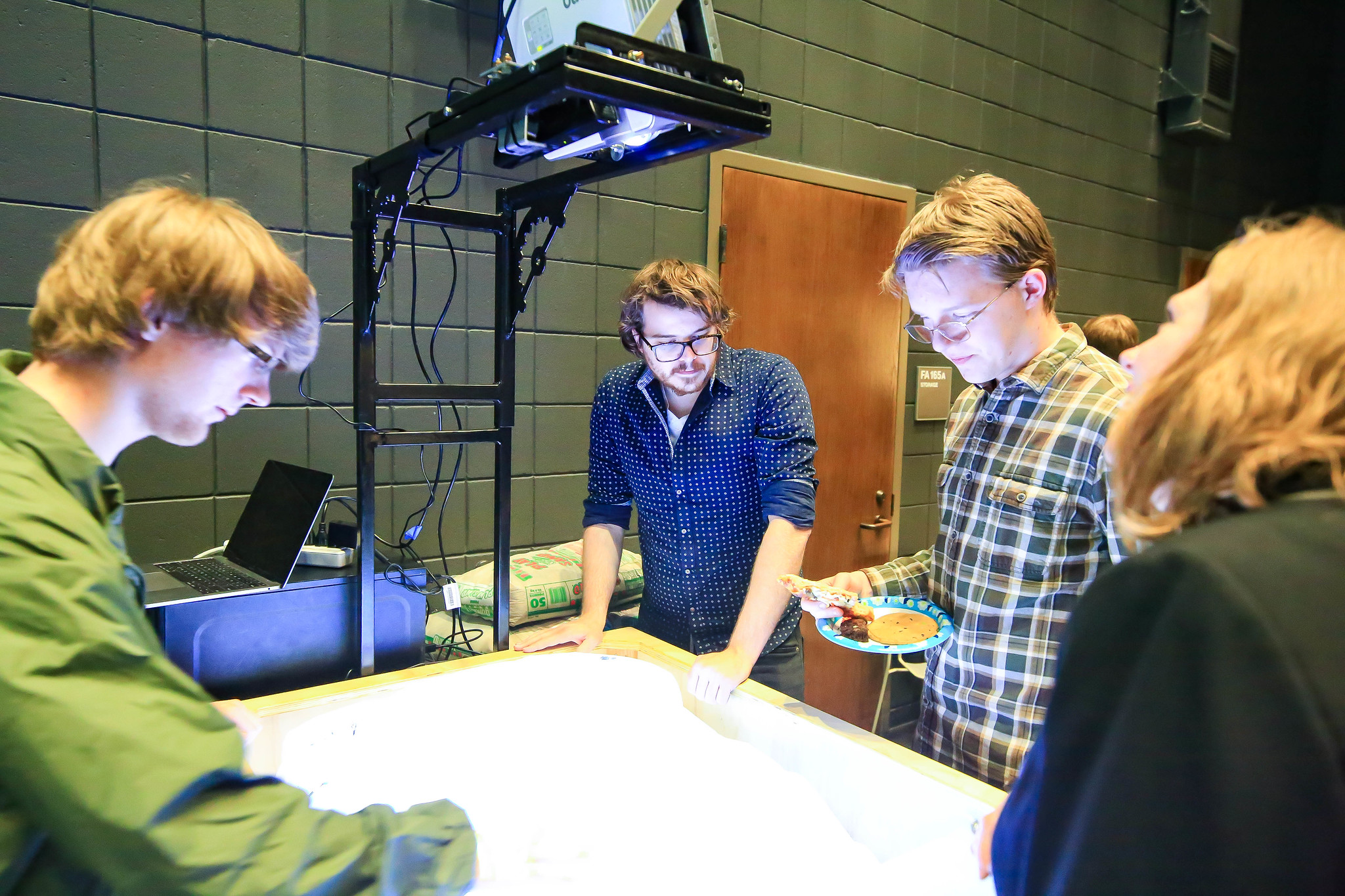In Fall 2018, I proposed building an Augmented Reality Sandbox at my local community college. My proposal was accepted by the college’s Student Senate and the Engineering Club, and we got busy on assembly.
The sandbox was based on the U.C. Davis AR Sandbox project. It works by first having a standard sandbox with a big metal arm over the top of it. On the top of the arm is mounted a short-throw projector and an Xbox 360 Kinect Depth-Sensing Camera. The Kinect measures the height of the sandbox surface and creates a 800×600 height map at 30fps. This information is sent to a desktop computer, where the height map is translated into a beautiful, topographic map, which is then sent from the computer to the projector.
The projector and the Kinect sensor are carefully calibrated to target the same area on the sand. If an area of the sand is high, the projector shows a reddish color over that area. The lowest areas are blue, followed by green, orange, red, and finally white for mountain peaks. To add icing to the cake, the computer uses a GTX 1060 graphics card to run Xavier-Stokes water simulations over the sand surface. If a person spreads their fingers over the top of the sand surface, the computer interprets this as a rain gesture. The computer then simulates water, which “flows” into lower areas of the sand surface. Here’s a video of the original from U.C. Davis:
Our initial plan was to use a PC from my community college that they had bulk purchased, but the water simulations used a GTX 1060 and that didn’t fit in the Lenovo Small Form Factor case. One of the students had an old gaming computer which he donated. It had a 4th-gen Core i5 and 8GB of DDR3 RAM in an ATX case, which was plenty for our purposes (as this uses very little CPU, but uses lots of GPU). We installed the GTX 1060 we bought previously from Student Life, and I installed and set up Linux Mint 19.2 on it.
As for the sandbox itself, we ultimately did not construct the box itself. We instead had a professional woodworker build the box, as we were running short on time before the end of the semester. After all, we only had one hour per week to work on the project, and (theoretically) 16 weeks. Added up, that’s basically a weekend’s time to work on the project. The community college news website ran a great article on the project which you can read for more information:
https://news.inverhills.edu/blog/engineering-group-project-ar-sandbox/






